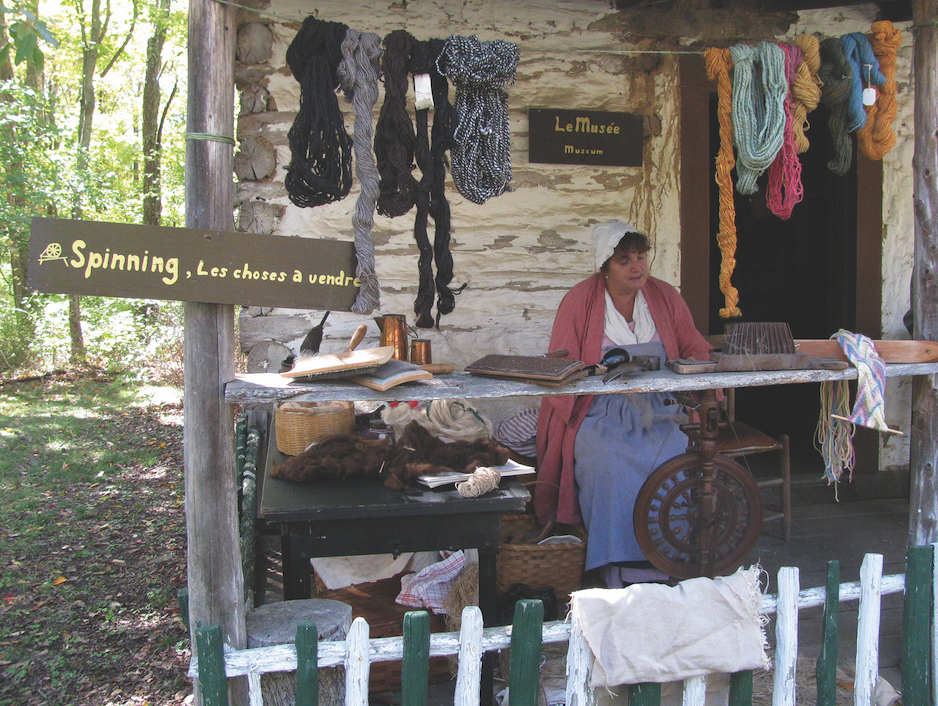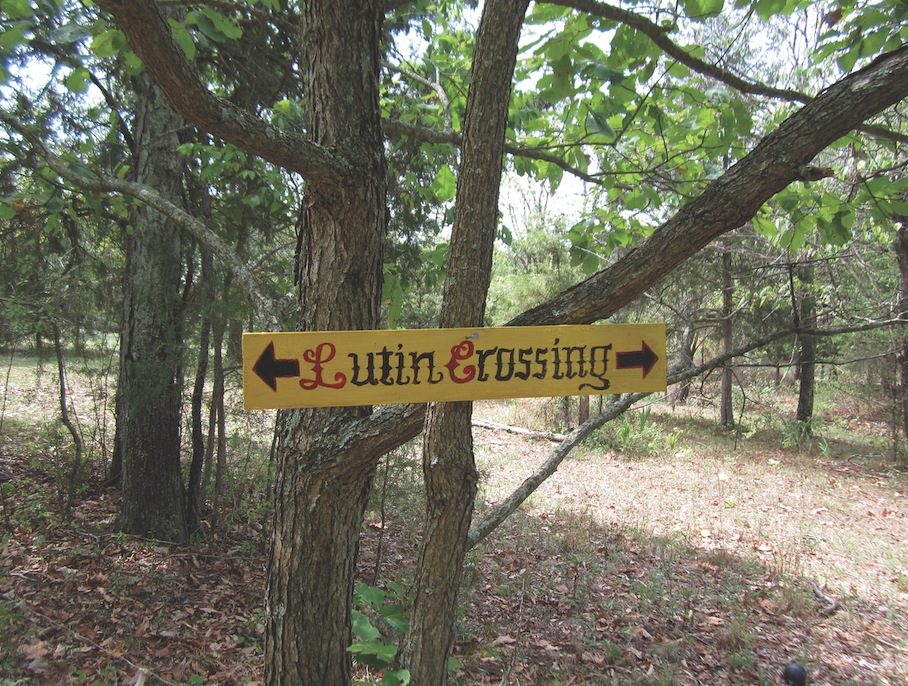Quelle surprise! Many Midwesterners once spoke a dialect known as Missouri French, one of five French dialects that originated in the United States.
While Missouri French, Muskrat French and Métis French are all but extinct, Louisiana French and New England French (a subgroup of Canadian French) remain relatively vibrant. As late as the 1940s Missouri French was the first language spoken by several thousand residents of the Old Mines community in the eastern reaches of the state.
The dialect dates from the 1700s when French-speaking miners and trappers migrated south from Canada to find a rich mix of cultures. Out of necessity these settlers incorporated American Indian, African, Spanish, Cajun and English words into their everyday discourse. Eventually the language developed its own accent. Community elders and interested linguists have since preserved the distinctive dialect.
Today perhaps only a few dozen speakers remain fluent, although many area residents recall a scattering of words and phrases learned as children, when Missouri French was widely spoken at home.

Ask around Old Mines for someone who speaks Missouri French, and most people point to Kent Bone, a fluent speaker and an avid student of the French history of the region. Bone is pleased to explain how the dialect varies from both classical and Canadian French, and he is well versed in the studies conducted on Missouri French since the early 1920s.
“The Missouri French accent is closer to Canadian French than it is to Louisiana French,” Bone explains. He should know, as he has made repeated visits to Quebec City and Louisiana. “After I begin speaking, I get some strange looks,” he admits. “It does not take long for someone to ask what version of French I am speaking.”
GET HISTORY’S GREATEST TALES—RIGHT IN YOUR INBOX
Subscribe to our HistoryNet Now! newsletter for the best of the past, delivered every Monday and Thursday.
SETTLING NEAR LEAD MINES
Missouri French originated in a 50-square-mile area centered on Old Mines, named for the area’s once prodigious lead mines. There are myriad reasons why the dialect survived. Foremost,the area remained geographically isolated well into the 1800s. There were few roads, and the railways bypassed the area, so outside communication was minimal. Another reason was the strong sense of community.
French settlers arranged their land in long, narrow plots, their homes clustered together with farmland fanning out like spokes from a hub. The purpose was to enjoy the communion and security of village life. The resulting emphasis on family and community precluded the need to assimilate. The Old Mines region comprised as many as 30 such isolated French hamlets. Finally, into the early 20th century the local St. Joachim Catholic Church continued to offer Mass and the sacraments in Missouri French.
The demise of Missouri French began in the early 1900s when public education and English lessons became compulsory in Missouri, prompting the clergy at St. Joachim to present church services in English. About the same time improved mining machinery put a number of local laborers out of work, and many of these young men went overseas during World War I. If they spoke Missouri French when they entered the service, they seldom spoke it by the time they returned.
During World War II a similar phenomenon affected many of the remaining speakers. In the postwar period English became the path to mainstream jobs and a brighter future. Finally, improved highways and modes of communication opened up the Old Mines community, exposing locals to people with varied ethnic backgrounds and languages.
KEEPING THE DIALECT ALIVE
Does Missouri French have a future? One person working to ensure it survives is Dennis Stroughmatt, a student of Missouri French who makes his living performing traditional songs in the dialect. The singing fiddler tours internationally, each year introducing thousands of people to the dialect. “One of my goals is to preserve the language,” he says, “as well as the Missouri French culture and music.”
Stroughmatt himself was amazed to discover that many of the centuries-old songs he learned in Missouri French are played in many French-speaking countries using the same tunes. “Because of the small isolated area where Missouri French was spoken,” he explains, “many of the words used are similar to Old Norman French, dating to the 1700s.”
In a recent issue of the journal Archaeology Stroughmatt explained the joy he gets “singing songs that are as much as 500 years old with people who are two or three times my age in a language that by all historical accounts should have been dead 200 years ago.” He thrives on the history as much as the music itself. “I am likely the only singer who has had anthropologists come to my concerts for a reason other than listening to the music.”
Visible reminders of Old Mines’ surviving French heritage include surnames on area mailboxes. “Plenty of Aubuschons, Beguettes, Boubans, Lalmondires, Rouleaus and Theabeaus still live here,” notes Bone, “as well as many others with French surnames.” The same names grace markers in the old town cemetery, many topped with traditional French crosses.
Other reminders include business signs in Missouri French. A yellow-black-and-red sign beside Bone’s driveway warns of a Lutin Crossing, a reference to a mythical French hobgoblin. And each spring and autumn locals and visitors gather at Old Mines for two grand fêtes (see below), celebrating local French heritage with traditional food, music, reenactments and period festivities.
Missouri French continues to defy the odds, and residents proudly recite Old Mines’ unofficial slogan: “On est toujours icitte” (“We are still here”).
English / French / Missouri French
insect / insecte / be’tail
corn husk / écale / capot de maïs
skillet / poêlon / esquilette
fried pastry / pâtisserie / frite galette chouage
peashooter / sarbacane / pétard
blackbird / merle / étourneau
opossum / opossum / rat de bois
raccoon / raton laveur / chat chouage
bullfrog / grosse grenouille / ouaouaron
slow moving / au ralenti / poc à poc
potato / pomme de terre / patat
ANNUAL FÊTES

La Fête a Renault, held the third weekend in May, marks the early 1700s arrival in the region of pioneering French lead miners under Phillippe François Renault.
During the festival more than 200 reenactors stay in tents on the green below St. Joachim Catholic Church, dressing and living the part of early settlers. Participants even bake bread in dome-shaped ovens reminiscent of the period. Fête de l’Automne, held the first Sunday of October, features globe-trotting singer and fiddler Dennis Stroughmatt, who performs traditional Missouri French songs.
Attendees to both events can also take in storytelling and sample traditional French food. The Old Mines Area Historical Society hosts both events.
historynet magazines
Our 9 best-selling history titles feature in-depth storytelling and iconic imagery to engage and inform on the people, the wars, and the events that shaped America and the world.


